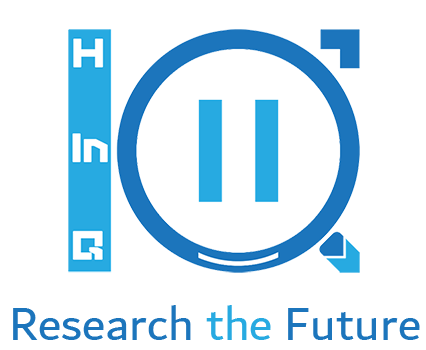Introduction – Drowning in Data, Starving for Insight
We were told that data would be our greatest asset. That collecting more of it would bring clarity, power, and precision. But for many businesses today, the reality is the opposite: they’re drowning in dashboards, buried in metrics, and still making decisions based on instinct.
The problem isn’t access to information—it’s actionability. Traditional dashboards, for all their color-coded charts and KPIs, often serve as little more than digital wallpaper. They reflect the past, confuse the present, and offer nothing for the future. Leaders are overwhelmed with reports, not empowered by them.
This is where AI-powered dashboards are turning the game on its head. These aren’t just visualization tools—they’re real-time decision engines, designed to surface what matters, suppress what doesn’t, and push leaders to act smarter, faster, and more confidently.
In this article, we’ll explore how AI dashboards are transforming data from a passive asset into a strategic force, reshaping how organizations think, move, and compete. Because the truth is clear: data isn’t power. Decisions are.
The Illusion of Data Abundance
Today’s companies are sitting on mountains of data—sales metrics, customer feedback, social signals, financial reports, supply chain inputs. Yet despite this abundance, most decision-makers feel less confident, not more. Why? Because data without clarity is noise.
Traditional dashboards were supposed to fix this. But most of them are built to report, not interpret. They offer static visualizations of historical data—beautiful charts that explain what happened, but rarely why it happened or what to do next. The result? Executives spend more time debating dashboards than driving action.
Worse, these dashboards often require specialized interpretation. If you’re not a trained analyst, good luck making sense of the flood of metrics. And so, many decisions still default to gut instinct—only now with a wall of irrelevant data flashing in the background.
The promise of a “data-driven culture” remains largely unfulfilled—not because we lack data, but because we’ve mistaken accumulation for insight. The real challenge isn’t collecting more data—it’s making it useful, timely, and strategic. And that’s where AI changes everything.
Dashboards That Think: The AI-Driven Upgrade
AI-powered dashboards aren’t just prettier spreadsheets—they’re intelligent decision tools. These systems don’t just display data; they analyze it in real time, highlight what matters most, and suggest actionable insights. They flag anomalies, identify trends, and answer critical questions before a human even asks.
They also evolve. The more they’re used, the better they understand user behavior and business context, offering increasingly relevant insights. And beyond accessibility through natural language and voice queries, AI dashboards integrate with programming languages like Python, allowing data scientists to run custom models and feed the results back into the dashboard.
That’s what makes these dashboards truly powerful: they combine conversational simplicity with deep analytical sophistication—delivering clarity and guidance in a single interface.
Democratizing Data: When Anyone Can Drive Strategy
One of the most radical shifts AI dashboards bring is not just smarter insights—it’s who gets to access them. In the old world, data lived in silos and spoke a language only analysts could understand. With AI-driven dashboards, that barrier is collapsing fast.
Thanks to natural language processing (NLP) and voice-command capabilities, non-technical users can now ask direct questions—“What were our top-performing products last quarter?” or “Why did churn spike in March?”—and get instant, understandable answers. No SQL, no filters, no dashboards built on request. Just answers in real time.
This isn’t just about convenience. It’s about strategic decentralization. When marketing managers, product teams, and sales leaders can access and act on insights independently, decisions move faster. Accountability improves. Cross-functional alignment tightens.
The result? Data fluency becomes a company-wide capability, not a niche skill. And when more people can see and understand the “why” behind performance, strategy becomes a shared language—not a top-down memo.
AI dashboards don’t just make insights smarter. They make everyone in the business smarter.
From Reporting to Predicting: Dashboards That Drive the Future
The most powerful AI dashboards don’t just help you react faster—they help you see around corners. By integrating predictive and prescriptive analytics, these systems shift the focus from reporting the past to shaping the future.
Predictive analytics uses historical and real-time data to forecast trends—customer churn, revenue dips, supply chain risks, or market shifts. But it’s the prescriptive layer that turns insight into direction. These dashboards don’t just say what might happen—they suggest what to do about it. They recommend actions, test scenarios, and calculate likely outcomes.
Imagine a CFO asking, “What happens if we reduce marketing spend by 15% next quarter?” The dashboard can simulate the impact across revenue forecasts, sales pipeline, and operational budgets—instantly.
In customer service, AI dashboards might detect rising complaints and automatically propose workflow changes or training adjustments. In operations, they might flag a bottleneck before it disrupts fulfillment.
This is the leap from being data-informed to data-directed. When dashboards can simulate, advise, and adapt in real time, businesses no longer make decisions after problems arise—they avoid them altogether.
Conclusion – If You’re Not Using AI Dashboards, You’re Not Leading
Data is everywhere—but clarity is rare. And in a landscape where speed and precision define competitive advantage, waiting on static reports or gut-based decisions isn’t just inefficient—it’s reckless.
AI-powered dashboards are not a luxury—they’re the new baseline. They cut through noise, anticipate problems, and democratize decision-making across the organization. They don’t just inform—they recommend. They don’t just display—they guide. And they do it all faster than any human team ever could.
The leaders of tomorrow won’t be the ones who hoard the most data. They’ll be the ones who make the smartest, fastest decisions—powered by dashboards that think, learn, and act.
Because in the end, data isn’t power. Decisions are. And the companies that move from data hoarding to AI-driven action will be the ones that win.
Ressources
- H-in-Q Analytics
- McKinsey – How AI Is Changing Decision-Making
- Forrester – The Future of Business Intelligence
- Harvard Business Review – Turning Data Into Strategy



